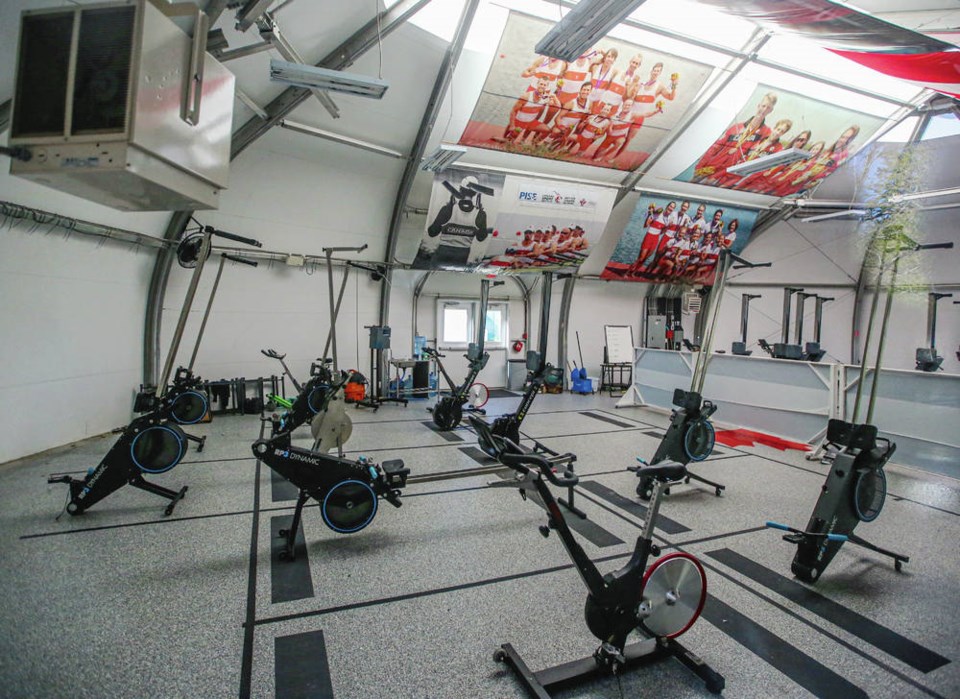This Olympics, amid high summer in Tokyo, will be the hottest in history.
It’s so hot that the Canadian Olympic men’s field-hockey team, which includes Victoria’s James Kirkpatrick and former University of Victoria Vikes players Brenden Bissett, Keegan Pereira and Matt Sarmento, has been practising in Tokyo with water cannons aimed directly on them, drenching them while they worked out ahead of today’s opening game against Germany.
“We’ve been here for two-and-a-half weeks and we’ve adjusted and acclimatized as best we can,” said Elk Lake-based rower Trevor Jones, who began his Olympic quest by winning his first race Friday in the men’s singles to advance to the quarter-finals Monday.
“We have protocols in place to help us manage the heat. It’s doing everything before you get out there. You try to cool right back down after the race.”
Many of the Canadian athletes, including Jones, are prepared for the conditions after training in a specially built heat-dome system at PISE, on the Camosun College Interurban campus.
The dome helped to prepare 182 of the 370 Canadian Olympic athletes for the heat and humidity they will face in Tokyo.
Athletes go in the chamber and run hard on a treadmill or pull on a stationary rowing machine while the temperature is cranked up to the high 40s C, with humidity added by a computerized system. They swallow an internal thermometer, in pill form, that allows technicians to monitor their body temperatures and how they are responding to the conditions.
The thermometer is later expelled naturally from the body.
The two venues for heat training at PISE include the indoor rowing-machine centre, a sprung structure that can accommodate entire teams, and an adjacent smaller trailer, which two athletes can enter at a time. The technicians are in a separate area that is kept at a comfortable room temperature for them.
“The trailer doesn’t look like much, but that’s where the magic happens,” said Noah Wheelock, general manager of Canadian Sports Institute-Pacific, which is based in Victoria at PISE, the Richmond Oval and Whistler.
“CSI-Pacific has worked with a fantastically high number of Olympians and the trailer has helped make sure our Canadian athletes are acclimatized as much as possible to the heat and humidity they are facing in Tokyo.”
For Olympic mountain biker Catharine Pendrel, competing in Tokyo after winning bronze at Rio 2016, the trailer was a godsend. Although she now lives in Kamloops, known for its hot summers, the Victoria-trained cyclist came to the PISE trailer to acclimatize for Tokyo after Interior cycling trails were closed due to forest fires.
Outside temperatures can crank up even on the Island, as we saw in June, but Wheelock said the key to the PISE system is the ability to control humidity, “because we don’t get that here on the West Coast.”
The system — which aims to keep an athlete’s body temperature moderated in searing conditions — is the brainchild of Victoria’s Wendy Pethick, considered a world leader in the study of thermoregulation, the process by which the body retains its core internal temperature.
Pethick, currently with the Canadian rowing team in Tokyo, is the manager of CSI-Pacific’s performance lab at PISE and was named sa���ʴ�ý’s sport scientist of the year for 2020 by Own the Podium. She has also been involved in projects with the RCMP, Canadian Coast Guard and sa���ʴ�ý Forestry Service.
Cam Levins of Black Creek, who will run the marathon for sa���ʴ�ý, said adaptability to heat will be key in outdoor events in these Olympics.
The Olympic marathon races for both men and women have been moved to the northern Japanese city of Sapporo to help athletes escape the hothouse that is Tokyo.
“But there is potential for even more humidity in Sapporo. It will depend on the day,” said Levins.
The 1964 Tokyo Olympics were held in October to avoid summer temperatures.



